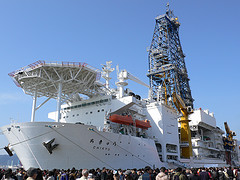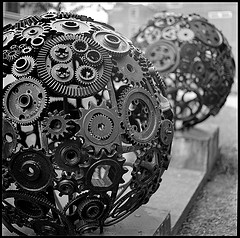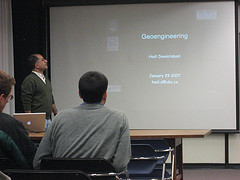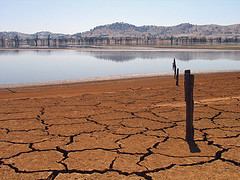June 9th, 2009 by Eugene Barsky | No Comments »

Thomson Reuters has released its latest figures for Canadian Science last week – http://sciencewatch.com/dr/sci/09/may31-09_2/
Between 2004 and 2008, Thomson Reuters indexed 226,232 papers that listed at least one author address in Canada. Of those papers, the highest percentage appeared in journals classified under the heading of environment/ecology, followed by psychiatry/psychology and geosciences. As the right-hand column shows, the citations-per-paper average for environment/ecology papers from Canada-based authors was 24% above the world average in the field (5.49 cites per paper for Canada versus 4.43 cites for the world). In fact, in all the fields shown here, the impact of Canadian research exceeded the world average, with particularly strong performance in space science (44% above the world average), physics (43% above), and agricultural sciences (+29%).
It is great to see that we are producing a decent share of world’s research. But it seems that Engineering is one of weak points!
** Photo by tripleman
Posted in Astronomy, Atmospheric Science, Chemical and Biological Engineering, Chemistry, Civil Engineering, Earth and Ocean Sciences, General Science, Geography, Main, Materials Engineering, Mathematics, Mechanical Engineering, News, Physics, Science - undegraduate classes, Statistics, Wood Sciences | No Comments »
June 3rd, 2009 by Eugene Barsky | No Comments »

There is an excellent article about the attempt to drill down into the Earth’s crust – and even through the crust, using the equipment aboard Chikyu – Japanese research ship.
It is a relly interesting read – “Ocean monster shows hidden depths”
You can see the relevant research for this area in Web of Science and Meteorological & Geoastrophysical Abstracts (MGA) databases that UBC Library subscribes to…
** photo by kayakaya
Posted in Atmospheric Science, Chemical and Biological Engineering, Earth and Ocean Sciences, General Science, Main, Science - undegraduate classes | No Comments »
May 27th, 2009 by Eugene Barsky | No Comments »

Thomson Reuters’ owned ScienceWatch.com has recently released the figures for “Top 20 Countries in Engineering“.
…is a listing of the top 20 countries which, as of the latest bimonthly update of Essential Science IndicatorsSM, attracted the highest total citations to their papers published in Thomson Reuters-indexed journals of Engineering over an 11-year period, (1998-December 31, 2008). These countries are of a pool of 96 countries comprising the top 50% ranked by total citation count in this field.
It is great to see Canada as #7 with 4.39 citations per paper!
** Photo by tim_d
Posted in Chemical and Biological Engineering, Civil Engineering, General Science, Main, Materials Engineering, Mechanical Engineering, News, Science - undegraduate classes | No Comments »
May 13th, 2009 by Eugene Barsky | No Comments »

Books 24×7 can now be accessed by UBCcard Barcode and PIN. Find the title in the catalogue, click on the “Online Access” under the title and sign in.
“OK, it’s easier,” you say. “But I’ve used Books 24×7 before. Where’s my saved ebooks?” Ay, there’s the rub. In testing, saved ebooks came across under the new log-in. In reality, they didn’t.
However, you can still access them through your old account. After you find a title in the Library catalogue, click on the “Alternate Online Access” at the BOTTOM of the page – OR – go to our Books 24×7 Info Page and log in through “old account” using your old Username and Password.
You can see all nearly 7,500 online books we buy from Books24x7 in our catalogue here, or search for Books24x7 EBook Collection as an author in our catalogue…
*NOTE: We are only allowed nine (9) users at one time. Therefore, the resource times-out after 15 minutes of inactivity.
** Photo by gaspi
Posted in General Science, Main, Mathematics, Science - undegraduate classes | No Comments »
May 8th, 2009 by Kevin Lindstrom | No Comments »
Statistics isn’t just about bayesian disease mapping and analyzing incomplete multivariate data. Statistics has some very important applications for analyzing hockey – yes, ice hockey. While my team hasn’t made the playoffs for a while except for that glorious 2006 run, it might be interesting to for any of you hockey statisticians to apply the research to the teams currently playing in the NHL playoffs.
Here’s a sample of some the articles available in MathSciNet and Current Index to Statistics dealing with ice hockey.
Thomas, Andrew C. (2007) “Inter-arrival Times of Goals in Ice Hockey,” Journal of Quantitative Analysis in Sports: Volume 3: Issue 3, Article 5. Available at: http://www.bepress.com/jqas/vol3/iss3/5
Thomas, Andrew C. (2006) “The Impact of Puck Possession and Location on Ice Hockey Strategy,” Journal of Quantitative Analysis in Sports: Volume 2: Issue 1, Article 6. Available at: http://www.bepress.com/jqas/vol2/iss1/6
Anthology of Statistics in Sports. Edited by Jim Albert, Jay Bennett and James J. Cochran. ASA-SIAM Series on Statistics and Applied Probability, 16. 2005.
Gill, Paramjit S. (2000) “Late-Game Reversals in Professional Basketball, Football, and Hockey” The American Statistician, Volume 54, Number 2 (May, 2000), pp. 94-99 http://www.jstor.org/stable/2686024
The Journal of Quantitative Analysis in Sports is a great place to browse.
Submitted by Kevin Lindstrom UBC Science and Engineering Librarian
Posted in Amusing stuff, Atmospheric Science, Chemical and Biological Engineering, Chemistry, Civil Engineering, Earth and Ocean Sciences, General Science, Geography, Main, Materials Engineering, Mathematics, Mechanical Engineering, News, Physics, Podcasts, Science - undegraduate classes, Statistics, Uncategorized, Wood Sciences | No Comments »
May 4th, 2009 by Eugene Barsky | No Comments »

Maclean’s has featured an article last week on geoengineering – http://www2.macleans.ca/2009/04/22/plan-b-for-global-warming/
The article focused on work of David Keith from UofC. His main article on geoengineering – “Geoengineering the climate: History and prospect” can be found here (in full text PDF for UBC folks)
A quick search in Web of Science database shows that every year there are twice as many article on this topic than a previous year…
Here are some folks in UBC Applied Sciences that work in this area
** Photo by freedryk
Posted in Atmospheric Science, Chemistry, Earth and Ocean Sciences, General Science, Geography, Main, Mechanical Engineering, News, Science - undegraduate classes | No Comments »
May 1st, 2009 by Kevin Lindstrom | No Comments »
The following 2009 Earth and Ocean Science undergraduate honours theses are available online from cIRcle – UBC Library’s Digital Repository.
- The Diamond Potential of the Tuwawi Kimberlite (Baffin Island, Nunavut). Cross, Jodi
- A pre-feasibility study to assess the potential of Open Loop Ground Source Heat to heat and cool the proposed Earth Science Systems Building at the University of British Columbia Parajulee, Abha; Smet, Kim
- Nature and Origin of Gold-Rich Carbonate Replacement Deposits at the Rau Occurrence, Central Yukon Kingston, Scott P.
- Flow Modeling of a Syncrude North East In-Pit Hummock for the Sandhill Fen in Fort McMurray, Alberta Preston, Ryan
- Asymmetrical Subsidence Resulting from Material & Fluid Extraction Martz, Patrick
- Permeability of Limestone-Dolomite Composite Fracture Surfaces Van de Reep, Peter John
- Humidity Cell Investigation of Particle Size Effects on Weather Rates of Mine Waste Rock from the Antamina Mine, Peru. Yu, Emily
- Relationships between Geology, Ore-body Genesis, and Rock Mass Characteristics in Block Caving Mines Banks, Craig
- Foundation Design of a Shoppers Drug Mart in Squamish, B.C. To, Martin Ho-Nang
- Uranium-Lead Geochronology of Granophyres from the Archean Stillwater Complex, Montana USA)
Corey J.
- Understanding Geological Time: A Proposed Assessment Mechanism for Beginner and Advanced Geology Students at the University of British Columbia, (Vancouver) Rhajiak, Jamil Ahmed Nizam
Submitted by Kevin Lindstrom Liaison Librarian for Earth and Ocean Sciences.
Posted in Earth and Ocean Sciences, General Science, Geography, Podcasts, Science - undegraduate classes | No Comments »
April 24th, 2009 by Kevin Lindstrom | No Comments »
Canada Excellence Research Chairs – Phase 1 Competition Results
Overview
In 2008, the Government of Canada created a new permanent program to establish 20 prestigious research chairs–Canada Excellence Research Chairs (CERC)–in universities across the country. The CERC program invests $28 million a year to attract and retain the world’s most accomplished and promising minds and help Canada build a critical mass of expertise in the priority research areas of environmental sciences and technologies, natural resources and energy, health and related life sciences and technologies, and information and communication technologies.
Phase 1 Competition Results
The following 17 universities have been invited to compete in Phase 2.
Universities invited to Phase 2 competition
(Number of successful proposals arranged from West to East)
* University of British Columbia (4)
* University of Alberta (5)
* University of Calgary (1)
* University of Saskatchewan (1)
* University of Manitoba (1)
* University of Toronto (5)
* University of Waterloo (4)
* McMaster University (2)
* Queen’s University (1)
* University of Western Ontario (2)
* University of Ottawa (2)
* McGill University (4)
* Université Laval (3)
* Université de Sherbrooke (1)
* Université du Québec à Trois-Rivières (1)
* University of Prince Edward Island (1)
* Dalhousie University (2)
Click here for a list of the successful proposals
Submitted by Kevin Lindstrom Liaison Librarian
Posted in About this blog, Amusing stuff, Atmospheric Science, Chemical and Biological Engineering, Chemistry, Civil Engineering, Earth and Ocean Sciences, General Science, Geography, Main, Materials Engineering, Mathematics, Mechanical Engineering, News, Physics, Podcasts, Science - undegraduate classes, Statistics, Teaching, Uncategorized, Wood Sciences | No Comments »
April 23rd, 2009 by Eugene Barsky | No Comments »

A recent BBC article mentions research showing that some of the developing world’s largest rivers are drying up because of climate change, threatening water supplies in some of the most populous places on Earth, say scientists.
Researchers from the US-based National Center for Atmospheric Research (NCAR) analysed data combined with computer models to assess flow in 925 rivers — nearly three quarters of the world’s running water supply — between 1948 and 2004.
A third of these had registered a change in flow and most of them — including the Niger in West Africa, the Ganges in South Asia and the Yellow River in China — were dryer.
Rivers are losing water for a variety of possible reasons, say the researchers, including the installation of dams and the use of water for agriculture. But in many cases the decrease in flow is because of climate change, which is altering rainfall patterns and increasing evaporation because of higher temperatures.
The research will be published in the American Meteorological Society’s Journal of Climate next month (15 May) – available for the UBC community in electronic full text.
** Photo by suburbanbloke
Posted in Atmospheric Science, Earth and Ocean Sciences, General Science, Geography, Main, Science - undegraduate classes, Uncategorized | No Comments »
April 17th, 2009 by Kevin Lindstrom | No Comments »
Giving the green light for BC small hydro: independent power producers are taking up the challenge to develop British Columbia’s plentiful supplies of small hydro. Suzanne Pritchard reports. International Water Power & Dam Construction, Dec 2008 v60 i12 p40(2)
“Well known for its mountainous topography and abundant rainfall, the coastal regions of British Columbia can have more than 4m of rainfall per year. In addition, the province’s sheer size, run-off from snow melt and thousands of creek reaches mean it is also ideally suited for run-of-river hydro power. ‘There is phenomenal potential for small hydro here,’ says Mike Wise, vice chair of the hydro committee for the Independent Power Producers Association of British Columbia (IPPBC). ‘The hydro sites are just fantastic.'”
“Beyond British Columbia’s ideal geographic setting for hydro power is the unique ‘green’ design of the run-of-river projects. ‘This design is very different to hydro projects almost anywhere in the world. It is the sole reason why we are judged to have the lowest environmental impact,’ says Steve Davis, president of the IPPBC.
“‘We do not have big storage reservoirs,’ says Davis. ‘In fact, typical headpond is only the size of a soccer field. While most others have short, thick pipes in tall concrete dams, our projects have long, narrow steep pipes and low rubber weirs. Our glaciated hanging valleys and alpine lakes enable us to locate the projects above a natural fish barrier and still get lots of head. So unlike most other hydro projects we are able to avoid directly impacting fish habitat.'”
Want to be familiarize yourself with run of river research both in terms of both the environmental and engineering aspects? What are the issues? Want to separate the hype from the reality?
The following databases will gave you access to international research dealing with run of river power generation:
ASFA and Geobase will give you access to environmental and fisheries related research. Compendex is excellent for the engineering side of run of river power generation.
Submitted by Kevin Lindstrom Liaison Librarian for Earth and Ocean Sciences
Posted in Civil Engineering, Earth and Ocean Sciences, General Science, Geography, Main, Science - undegraduate classes, Uncategorized | No Comments »






